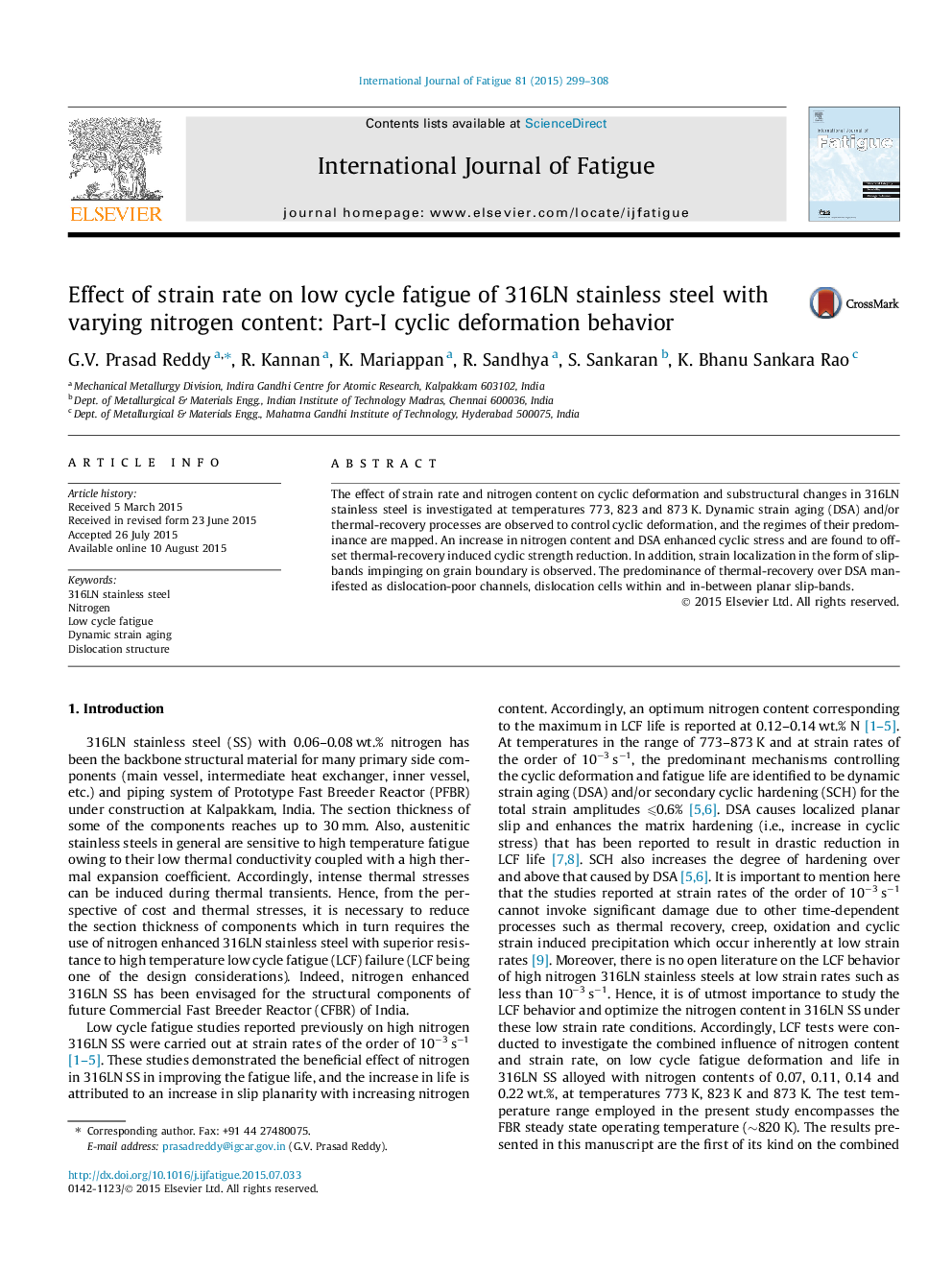| Article ID | Journal | Published Year | Pages | File Type |
|---|---|---|---|---|
| 774986 | International Journal of Fatigue | 2015 | 10 Pages |
•Dynamic strain aging and/or thermal-recovery strongly control cyclic deformation.•Nitrogen content in 316LN SS and dynamic strain aging enhances planar slip mode.•Strain-localization witnessed in the form of slip-bands impinging on grain boundary.•Increase in nitrogen offsets thermal-recovery induced cyclic-strength reduction.•Substantial thermal-recovery manifested as dislocation-poor zones and cells.
The effect of strain rate and nitrogen content on cyclic deformation and substructural changes in 316LN stainless steel is investigated at temperatures 773, 823 and 873 K. Dynamic strain aging (DSA) and/or thermal-recovery processes are observed to control cyclic deformation, and the regimes of their predominance are mapped. An increase in nitrogen content and DSA enhanced cyclic stress and are found to offset thermal-recovery induced cyclic strength reduction. In addition, strain localization in the form of slip-bands impinging on grain boundary is observed. The predominance of thermal-recovery over DSA manifested as dislocation-poor channels, dislocation cells within and in-between planar slip-bands.
Graphical abstractFigure optionsDownload full-size imageDownload as PowerPoint slide
